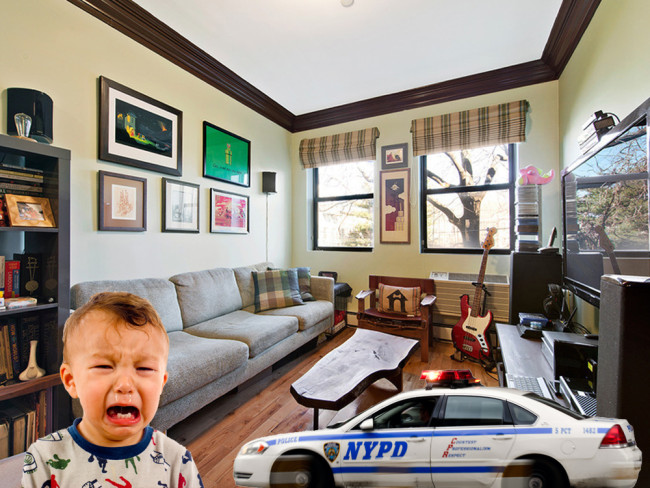Get your family's noise pollution under control

Parents may accept, if not just resign themselves to, the clamor their children create (think little feet thumping down the hall, blocks and Legos clattering to the floor, the atonal screeches and plinks of their instrumental practice sessions). But the neighbors may not be so tolerant. Here, some measures—from minimal to nuclear—that families can undertake to make the din a little less disruptive. It is stay-at-home-all-day season, after all, and you probably want to get through the winter without making enemies of your neighbors.
[Note: This story was first posted in January 2015.]
The stopgap measure:
Noise tends to echo off bare walls and floors so the quickest fix is simply covering them up:
- Put down some area rugs—the larger and plusher, the better. Don’t forget to include a dense rug pad, which can add another layers of sound muffling.
- Next, hang some full-length curtains. Skip the sheer panels in favor of heavy drapes made of velvet or wool. Bonus: This will minimize some of the street noise seeping into your home from the street, which may mean less need for children to holler to be heard in the first place!
- Finally, add a few sound-dampening decorative elements, like poufs, oversized beanbags and/or floor cushions, a heavy wall tapestry and even a cozy throw or blanket draped over the furniture. The softer and cushier the room, they more noise will be absorbed.
The longer-term solution:
If you have a bit more time and money, these amped up methods will take your noise management to the next level:
- Area rugs can only do so much since the floor that isn’t covered can allow for the transfer of sound. If you really want to cut down on noise created by footfalls, crawling and toys/books crashing to the floor, swap the rugs for wall-to-wall carpeting.
- Next, since fabric absorbs sound better than leather and vinyl, if your furniture is made of the latter, you may want to consider reupholstering.
- And if you really want to do your neighbors a favor, invest in acoustic panels for walls and/or ceiling. The latest can be created from a family photograph or a piece of digital art that will prevent your space from looking too much like the inside of a professional recording studio.
The permanent fix:
If you’re really serious about resolving the problem for good, your best bet is to consult a soundproofing expert. Their solutions tend to be more structural—ripping up floors, walls and ceilings to install better insulation and acoustical matting, eliminating recessed lighting and ceiling fans that can send noise up and into the apartment above, sealing crevices with compounds that prevent sound from escaping, replacing doors and windows with more soundproofed versions—but the results wil be far more thorough.
Most of the more superficial solutions help to deaden echo, but they don't do much about actual sound transfer. "For that you need to look seriously at the floors, walls and ceilings," says Michael LaFratta of Silentium Soundproofing, a New York City-based company devoted to residential and commercial soundproofing. Beware, the cost of peace is not inexpensive (or likely to be something a landlord will cover, much less allow; indeed, soundproofing tends to be more the domain of homeowners than renters). But it may be a small price for parents to pay for the sound of silence.
You Might Also Like


























